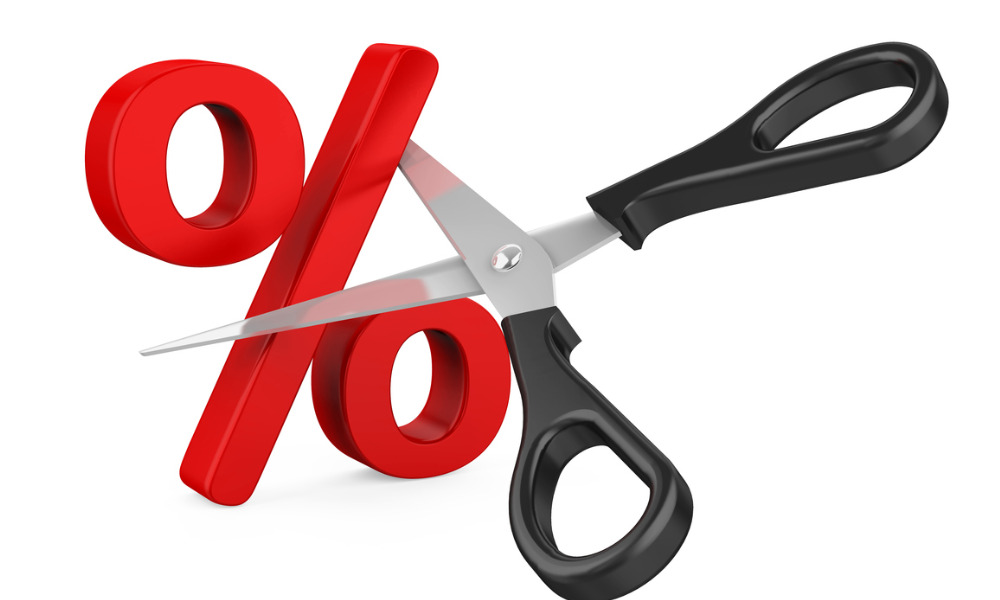

Morgan Stanley economists forecast the Federal Reserve to make deep interest-rate cuts over the next two years as inflation cools, while Goldman Sachs Group Inc. analysts expect fewer reductions and a later start.
The central bank will start cutting rates in June 2024, then again in September and every meeting from the fourth quarter onward, each in 25-basis point increments, Morgan Stanley researchers led by chief US economist Ellen Zentner said in their 2024 outlook on Sunday. That’ll take the policy rate down to 2.375% by the end of 2025, they said.
Goldman Sachs, meanwhile, sees the first 25-basis-point reduction in the fourth quarter of 2024, followed by one cut per quarter through mid-2026 — a total of 175 basis points, with rates settling at a 3.5%-3.75% target range. That’s according to a 2024 outlook from economist David Mericle, also published Sunday.
The Goldman Sachs forecasts are closer to the central bank’s. Fed projections from September show two quarter-point cuts penciled in for next year and the policy rate ending 2025 at 3.9%, according to the median estimates of policymakers. Fed governors and regional bank presidents will update their forecasts at next month’s meeting.
Morgan Stanley’s team sees a weaker economy that warrants a greater magnitude of easing, though no recession. They expect unemployment to peak at 4.3% in 2025, compared with the Fed’s 4.1% estimate. Growth and inflation will be slower than officials anticipate, too.
Here are some of Morgan Stanley’s and Goldman Sachs’ 2025 forecasts, compared with the median of Fed officials’ projections in September:
| Metric | Morgan Stanley | Goldman Sachs | Federal Reserve |
| Federal funds rate | 2.375% | 4.0%-4.25% | 3.9% |
| Unemployment rate | 4.3% | 3.6% | 4.1% |
| Change in real GDP | 1.4% | 1.9% | 1.8% |
| Core PCE inflation | 2.1% | 2.2% | 2.3% |
“High rates for longer cause a persistent drag, more than offsetting the fiscal impulse and bringing growth sustainably below potential from 3Q24,” Zentner’s group said in their report. “We maintain our view that the Fed will achieve a soft landing, but weakening growth will keep recession fears alive.”
The US should avert a downturn as employers hold onto workers, even though hiring will slow, Morgan Stanley said. That will weigh on disposable income and therefore spending, they said.
The team also expects the central bank to start phasing out quantitative tightening next September until it ends in early 2025. They see the Fed reducing the runoff caps on Treasuries by $10 billion per month and continuing to reinvest mortgages into Treasuries.
Goldman Sachs expects the Fed to keep rates relatively high because of a higher equilibrium rate, as “post-financial crisis headwinds are behind us” and bigger budget deficits are likely to persist and boost demand.
“Our forecast could be thought of as a compromise between Fed officials who see little reason to keep the funds rate high once the inflation problem is solved and those who see little reason to stimulate an already-strong economy,” Goldman’s Mericle wrote.

Relationships are key to our business but advisors are often slow to engage in specific activities designed to foster them.

Whichever path you go down, act now while you're still in control.

Pro-bitcoin professionals, however, say the cryptocurrency has ushered in change.

“LPL has evolved significantly over the last decade and still wants to scale up,” says one industry executive.

Survey findings from the Nationwide Retirement Institute offers pearls of planning wisdom from 60- to 65-year-olds, as well as insights into concerns.
Streamline your outreach with Aidentified's AI-driven solutions
This season’s market volatility: Positioning for rate relief, income growth and the AI rebound
